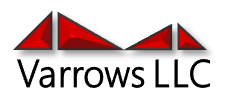The Future of Franchise Marketing – Local Marketing; Global Oversight

The Future of Franchise Marketing – Local Marketing; Global Oversight
Franchisees are looking for new ways to market their local stores/offices while their corporate offices want brand oversight to ensure adherence to branding strategy and compliance. It’s the tug-of-war that brands and their local operators have been playing since franchising began. And it’s only gotten worse with the recent and increased prevalence of online and social media marketing. Today there are dozens of marketing channels that these franchisees can use to grow their business, and hundreds of online tools to help them do so – usually not approved by the franchise brand.
It’s becoming harder for brands to keep up with it all, but it’s also not going away (and I’d argue that it’s probably going to become a lot worse).
So what’s a brand to do? Do you continue to try to limit and restrict the channels your franchisees can use (with likely very limited success), or do you buy in and find ways to give your franchisees access to these tools – but in a way where you can monitor, manage, and control on what’s happening online at the local level?
Centralization to the rescue!
This is where centralization of online tools and applications can be a game changer for franchise businesses. Centralized platforms allow you to offer tools like social media management, email marketing, directory listings and review management, website builders, appointment schedulers, and more in a single platform. Moreover, this centralized network can provide corporate a master account to monitor, measure, and manage when needed the local online marketing efforts of all of their locations. It gives your franchisees access to the tools that they want to implement, while also giving you the oversight you need.
Centralization can help you optimize your local marketing
But more than being able to make sure your local operations are staying on brand, centralized technology can help you actually drive better marketing performance and growth at the local level. There will always be those owners that are better at using social media, creating new content, or coming up with new creative offers. What if this platform, which allows you the marketing oversight you’re looking for, could also present local marketing insights that you can use to help other locations grow? You can get a real look at how locations that are using social media to driving meaningful business are doing it. See what type of content they are creating/sharing, what tags they may be using, what content gets the best engagement, etc. You can take those learnings and work with those top locations to create training sessions and templates that other locations can use to drive the same level of success! It’s like crowdsourcing the best tactics and strategies using real data, and helping your entire organization be the best it can be.
Getting started
If your franchise has been searching and brainstorming new ways to drive better oversight into how your brand is being used at the local level, or looking to expand your local marketing efforts, check out Qebot.com. Request a demo to see how we’re helping brands – from a few locations to thousands of local operations – drive better local marketing success and brand protection.









